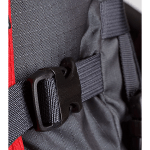Use
The first question you have to ask yourself is; What activities am I going to do / where do I want to use the backpack?
If you do single day walks in the summer and go ski touring in the winter, you probably will need more than one (day) pack. Just because the activities themselves, the circumstances and the gear you carry with you are so different.
If you decide to use the (day) pack multifunctionally, for school and for day trips, for example, it’s smart to look at backpacks with a larger capacity. Are you climbing occasionally during your hikes? Then consider a narrower backpack so your arms have all the freedom of movement.
All examples of questions you might want to ask yourself. So what kind of backpacks fit certain type of activities?
Day trips
For day trips, you will often only take food and something to drink. You’ll want a bit of room to stow away your phone and/or camera. You’ll also want to pack a light raincoat or an extra layer just in case the weather turns towards the wet and cold. Look for backpacks between the 15 and 25-liter mark. If you foresee a high-intensity activity in may be smart to look at a backpack that is compatible with hydration systems such as the well-known CamelBak. The backpack brand Osprey has its own hydration packs that suite perfectly to their line of packs. Many (day) packs are also outfitted with side pockets for taking a drink.
Small day trips: 10 – 20 liters;
Day trips: 20 – 40 liters.
Multiple day trips
You might look for multi-day hikes in heavy and varied terrain. Backpacks for multiple day trips are available in different variations. The requirements for multiple day trips from two to four days may be different from the requirements for heavy treks of five days or more. As you spend more days on a hike, into more backcountry terrain you will probably bring more gear and supplies with you. This is when the load-bearing system really comes into its own and you need to choose wisely. In this category of packs there are models which can easily to offer more carrier volume or conversely when you’re not taking along too much, can be strapped or zipper down and compressed so as to feel less bulky. As for volume, you can keep to the following rule of thumb.
Multiple day trips from two to four days: 40 – 50 liters;
Four-day or longer camping rides with lots of supply options: 50 – 60 liters;
Four-day or longer camping rides with low supply possibilities: 60 – 90 liters.
Hiking & Expeditions
Backpacks designed for expeditions and treks are offered in large volumes. This because you’ll be taking along much more food and drink, fuel, sleeping bag, isolation mat, a tent and other necessities. The bigger the pack, the larger the weight being carried the more attention you need to pay to the distribution of the load within the pack, and how the pack is organized to keep the items you need to be stored evenly and easily accessible.
Expeditions and long camping rides/winter trips of five days and longer 80 – 100 liters.
Climbing
To do this, you choose a smaller backpack. If you climb on high altitude, you should take into account a larger volume because you need to take more clothes. Your climate ambition determines whether you need a multi-day backpack of small volume or need a large technical backpack. Compare your required material (ropes, carabiners, etc.) with the necessary additional options that the backpack can be equipped with (iceberg attachment, fastening loops). Climbing bags are often provided with compression straps, a chest strap is very valuable.
Climbs of one to two days: 20 – 40 liters;
Climbs of two to four days: 40 – 50 liters.
Ski tours
For skitours, it is advisable to choose a small backpack so you can move your arms freely. Make sure your backpack is equipped with the ability to attach skis. A chest strap and hip strap are essential. Climbing bags are often good for skiing.
Ski trips of a day: 20 – 40 liters;
Ski trips from two to four days: 40 to 50 liters.
Trail running/adventure racing
These are often small backpacks equipped with bottle holders and/or hydration systems. Hip models are also available. The advantage of this is that they are less likely to shift while walking and they keep your back free so sweat can be removed properly.
Trail-running backpack is on average 10 liters.
Travelling/Backpacking
For travel by air and public transport, other requirements are imposed on the backpack. These backpacks are often provided with two or more compartments, a magazine or notebooks box, space for equipment (laptop, tablet, phone) and a box for pens and other small items. What is very useful for travel backpacks is that they are often provided with workable shoulder and hip straps. Also, the opening is not via a top cover but via a large zipper opening at the front.
Travel backpacks 60-80 liters.

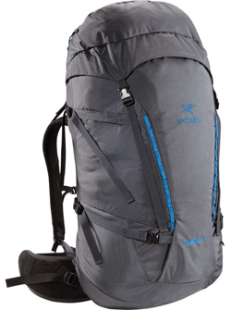
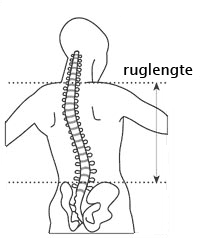
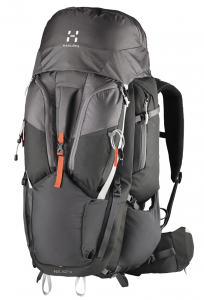
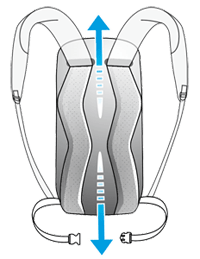
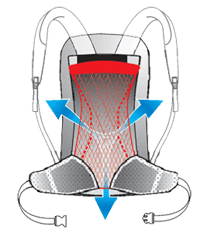
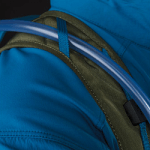
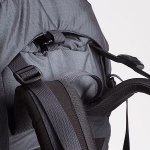 The straps
The straps 